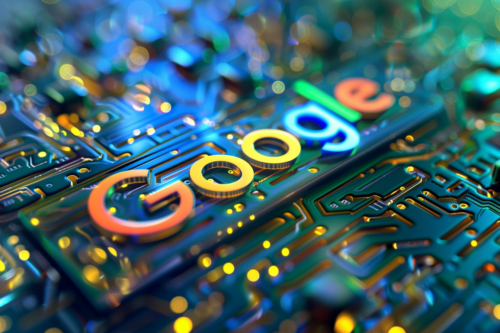
This article provides a detailed comparison between Performance Max Ads and Traditional Campaigns in Google Ads. It covers the evolution of Google Ads, the nuances of both campaign types, their impact on conversion rates and ROI, and best practices. The analysis concludes with insights into the future of Google Ads and strategic recommendations for advertisers.
Google Ads has revolutionised the digital advertising landscape — including their most recent update to Performance Max Ads — offering businesses a dynamic platform to reach their target audience. Originating as a simple text-based advertising system, Google Ads has evolved into a sophisticated tool, encompassing a variety of ad formats, targeting options, and performance tracking capabilities. This evolution reflects the ever-changing digital marketing environment, adapting to new technologies and user behaviours. Today, Google Ads stands as a cornerstone for businesses seeking to enhance their online presence, driving traffic and conversions through its robust platform.
The transition within Google Ads from traditional campaign methods to more advanced solutions like Performance Max Ads represents a significant shift in digital advertising strategies. As businesses navigate this change, understanding the nuances of these different approaches becomes crucial. Traditional campaigns have laid the foundation for digital advertising, focusing on specific keywords and placements, while generative AI in Performance Max optimises performance across multiple channels. This comparative analysis aims to demystify these two approaches, offering insights into their respective strengths and how they can be leveraged to achieve marketing objectives.
Performance Max Ads offers a streamlined ad placement process across multiple Google platforms, including YouTube, Gmail, and the Google Display Network. By harnessing AI’s efficiency, these types of ads can achieve a wide range of marketing objectives from lead generation to boosting online sales. This approach not only simplifies campaign management, but also broadens the potential audience reach, especially beneficial for those new to digital advertising or operating with limited resources.
When considering the use of Performance Max Ads, it is particularly advantageous in scenarios where:
As such, one of the core advantages of Performance Max Ads lies in their ability to efficiently target a diverse audience with minimal manual intervention. By automating ad placements, these ads represent a paradigm shift from hands-on campaign management to a more goal-focused, results-oriented approach. This change challenges advertisers to adapt their strategies, emphasising the importance of setting clear goals and providing high-quality ad inputs for optimal AI-driven outcomes.
Despite these benefits, Performance Max Ads also present certain challenges. The move toward automation translates to reduced control over specific ad placements and less transparency, which might concern seasoned advertisers used to fine-tuning their campaigns. This loss of granularity in ad placement control is counterbalanced by the potential for impressive campaign results, albeit with a caveat: the reliance on AI necessitates an initial learning phase for data collection and algorithm optimisation, which could initially slow campaign momentum.
These factors highlight the importance of understanding both the strengths and limitations of Performance Max Ads in shaping an effective digital advertising strategy.
In contrast, traditional campaigns in Google Ads have long been the backbone of digital advertising efforts. Characterised by their keyword-centric approach and manual bid management, these campaigns offer advertisers a high degree of control over their ad placements and audience targeting. From search ads that appear in response to specific queries to display ads strategically positioned on various websites, traditional campaigns allow for meticulous crafting of advertising strategies. This level of precision enables businesses to finely tune their ads, ensuring they reach the right audience with the right message at the right time, a crucial aspect for campaigns with specific goals or niche target markets. This granularity also allows for greater control over campaign performance and provides detailed insights into what is or isn’t working.
The strategic depth of traditional campaigns, however, demands a significant investment in terms of time and expertise. Advertisers need to continuously monitor and adjust their bids, choose appropriate keywords, and craft compelling ad copy. This hands-on approach provides detailed insights into campaign performance, allowing for nuanced adjustments and optimisation. Yet, it also poses challenges, particularly for smaller businesses or those with limited resources, as it requires ongoing attention and a deep understanding of the platform’s intricacies. The balance between control and complexity is a key consideration for advertisers choosing between traditional and more automated campaign types like Performance Max Ads.
Setting up a Performance Max Ads campaign begins with defining your specific advertising and conversion goals, which guide the AI in optimising towards achieving your desired outcomes. Establishing these goals is crucial, whether you’re aiming for online sales, lead generation, or other specific objectives. Following goal setting, uploading creative assets for your campaign’s visibility across the Google Network is next, which is discussed in more detail later in this article.
The management of Performance Max campaigns is largely automated by Google’s AI, which simplifies processes such as bidding, budget allocation, and channel selection. While Google’s AI handles many aspects of campaign operation, initial steps like setting up conversion tracking and remarketing lists are crucial. These elements are necessary for the AI to effectively optimise the campaign’s performance.
In Performance Max Ads, audience targeting is largely driven by Google’s AI, which uses a range of signals to determine the most effective audience for your ads. This includes data from customer lists, website visitors, and other user interactions. Advertisers provide these audience signals, which guide the AI in optimising the ad delivery, but the actual targeting process is automated. This approach allows for a broad yet potentially effective reach, as the AI can identify and target users across various Google platforms based on their likelihood to convert. However, this level of automation means advertisers have less direct control over who sees their ads, which can be a concern for campaigns requiring precise audience targeting.
As mentioned, traditional Google Ads campaigns offer a high degree of control over audience targeting. Advertisers can specify keywords, demographics, interests, and more to target their ideal customer profile. This granular level of control enables businesses to tailor their messaging and offers to specific segments of their audience, potentially increasing the relevance and effectiveness of their ads. However, this approach requires a deep understanding of the target audience and continuous campaign monitoring and adjustment to ensure optimal performance. The trade-off here is the time and expertise required to manage such detailed targeting versus the broader, AI-driven approach of Performance Max Ads.
The creative aspect of Performance Max Ads is significantly enhanced by new AI-powered features, designed to elevate the quality, effectiveness, and efficiency of a campaign’s creative assets. With these advancements, Performance Max now offers innovative asset generation capabilities, enabling you to create compelling headlines, descriptions, and images that align with your creative vision.
A key ingredient for a successful Performance Max campaign is the variety of assets. The AI-powered features simplify the process of creating and scaling new assets. You can now generate new text and image assets for your campaign with just a few clicks, utilising Google AI to produce assets that effectively reach customers across all of Google’s performance inventory and formats.
The AI-generated assets are unique to each business or client, ensuring that no two images are identical. This feature allows for more personalised and diverse ad content, catering to the specific needs and branding of your business. You maintain full control over the selection of these assets for your campaign, enabling you to choose which assets best represent your brand’s message and objectives.
In addition to asset generation, Performance Max also offers AI-powered image-editing capabilities directly within Google Ads. This feature allows your team to experiment with variations of your usual images, making them more relevant for different seasons or campaigns. For example, you could update images to include winter scenery for the holiday shopping season, testing new variations at scale.
All AI-generated assets are developed in line with Google’s AI principles and practices, ensuring ethical use. These assets are watermarked and tagged to indicate AI generation, maintaining transparency in your advertising efforts. Additionally, Google has implemented guardrails to prevent the generation of inappropriate or sensitive content, and all generated ads are subject to Google Ads policies.
Unlike traditional ads, where these features are not available, Performance Max’s new AI-powered conveniences can streamline advertiser’s approach to ad creatives, ensuring a blend of innovation, personalisation, and effectiveness.
Evaluating the performance of Performance Max Ads necessitates a different approach compared to traditional campaigns, given their automated nature. Key metrics such as click-through rate (CTR), conversion rate, and cost per acquisition (CPA) remain crucial; however, the interpretation and influence of these metrics differ. Performance Max Ads often exhibit broader variations across channels and asset combinations as the AI optimises for overall results. This broader spectrum can present challenges in identifying specific performance drivers but also offers a more comprehensive view of campaign effectiveness.
One of the primary advantages of Performance Max Ads is their ability to optimise conversion rates and ROI by leveraging Google’s machine learning capabilities. These ads have the potential to enhance conversion rates by targeting potential customers across various Google platforms, aligning closely with user intent and behaviour. The effectiveness of these campaigns in terms of ROI, however, is contingent on the quality of creative assets and the precision of audience signals. To maximise their potential, businesses need to ensure that their inputs to the AI accurately reflect their marketing objectives.
In contrast, traditional Google Ads campaigns provide more granularity in performance metrics, allowing advertisers to view detailed data for each keyword, ad group, and ad variant. This level of detail is invaluable for digital research and strategies like feasibility studies, where specific keywords or messages are integral. The more controlled environment of traditional campaigns enables advertisers to fine-tune elements like keywords, ad copy, and bidding strategies based on detailed performance data, facilitating a targeted strategy to enhance ROI.
The future of Google Ads is likely to see further advancements in AI and automation, as exemplified by the development of Performance Max Ads. This trend suggests a continuing shift toward more integrated and efficient advertising solutions, which can adapt to the changing digital landscape and user behaviours. Advertisers should be prepared to embrace these changes, staying informed about new features and best practices in Google Ads.
However, the role of traditional campaigns will remain significant, particularly for businesses that require a high level of control over their advertising efforts. The balance between automated and manual campaign management will continue to be a key strategic consideration for advertisers. As Google Ads evolves, the most successful advertisers will be those who can effectively combine the strengths of both automated and traditional approaches to create comprehensive, adaptable, and effective advertising strategies.
As evidenced, Performance Max Ads and traditional campaigns in Google Ads each offer unique advantages and challenges. If you’re looking for a digital advertising partner to help navigate the evolving landscape of Google Ads, contact Digital Strategy Consultants today, ensuring your campaigns are not only current but ahead of the curve.
Eamonn O’Raghallaigh, PhD, is Managing Director at Digital Strategy Consultants and Faculty at Trinity Business School, teaching the MSc in Digital Marketing Strategy programme.
Get in touch with a brief summary of your requirement and we’ll be happy to discuss your project in an open and transparent manner.
Request a Consultation
As the European Accessibility Act (EAA) 2025 approaches, organisations must proactively enhance their digital accessibility. This guide outlines criti..
Read More
This article delves into the rapidly evolving world of voice search technology and its potential impact on the advertising industry. It highlights the..
Read More
Explore the pivotal role of SEO audits in digital marketing. Our article delves into how advanced audit elements provide insights for competitive stra..
Read MoreNavigate the complex world of cybersecurity, and learn how to protect your digital assets, ensure customer trust, and uphold your brand's reputation a..
Read More
March 2024 brought significant news with a wide-scale culling of poor quality, spammy websites, many of which heavily relied on AI-generated content...
Read More
Our strategic mindset, client-focussed approach, reliability, flexibility and high-degree of digital expertise ensures you are in safe (and transparent) hands. Learn more about our team.
More About Us